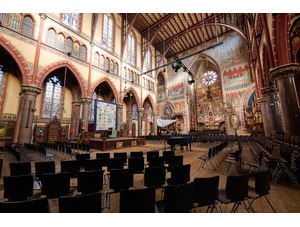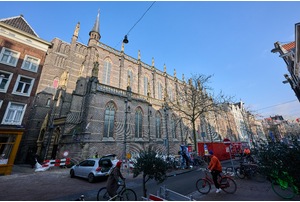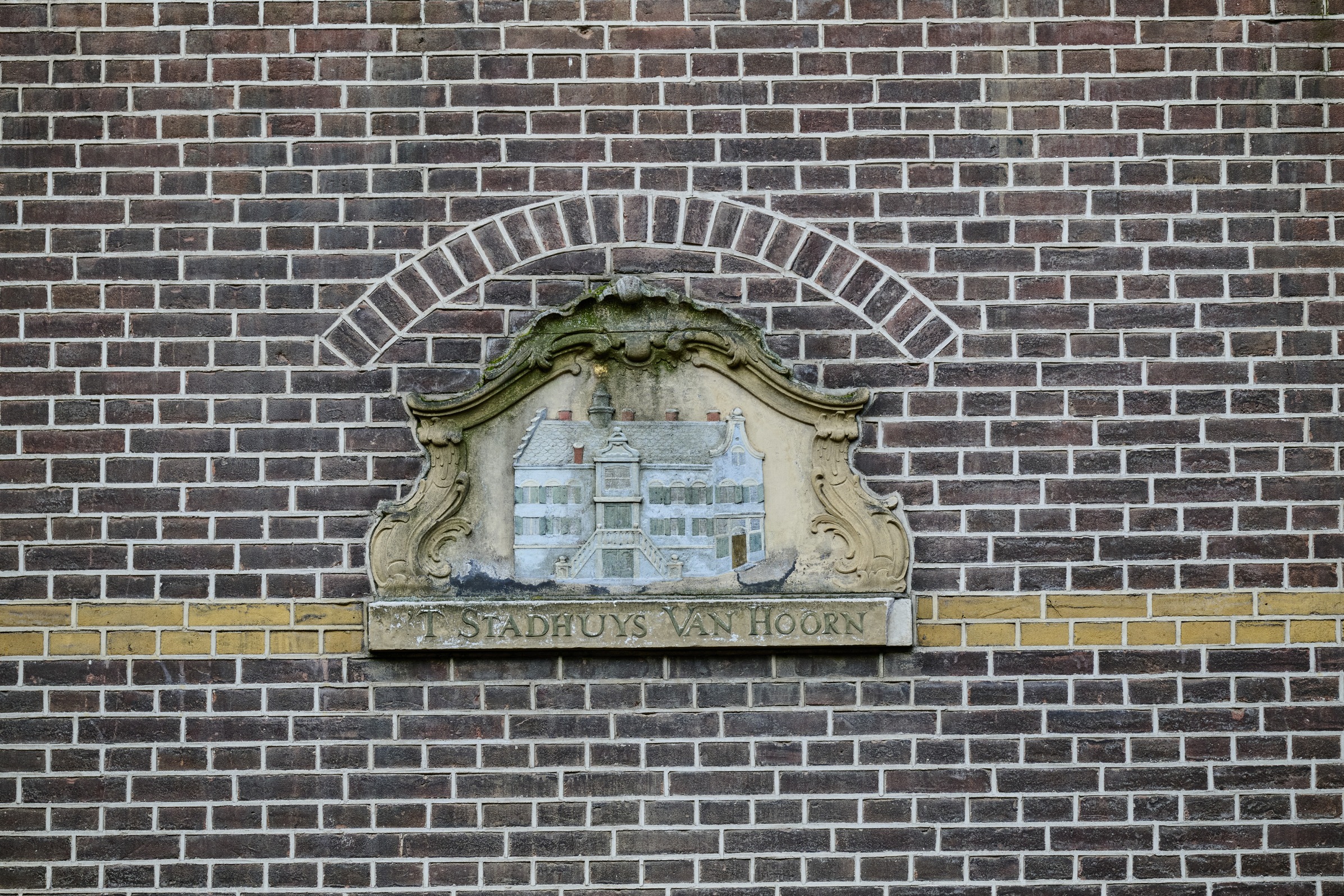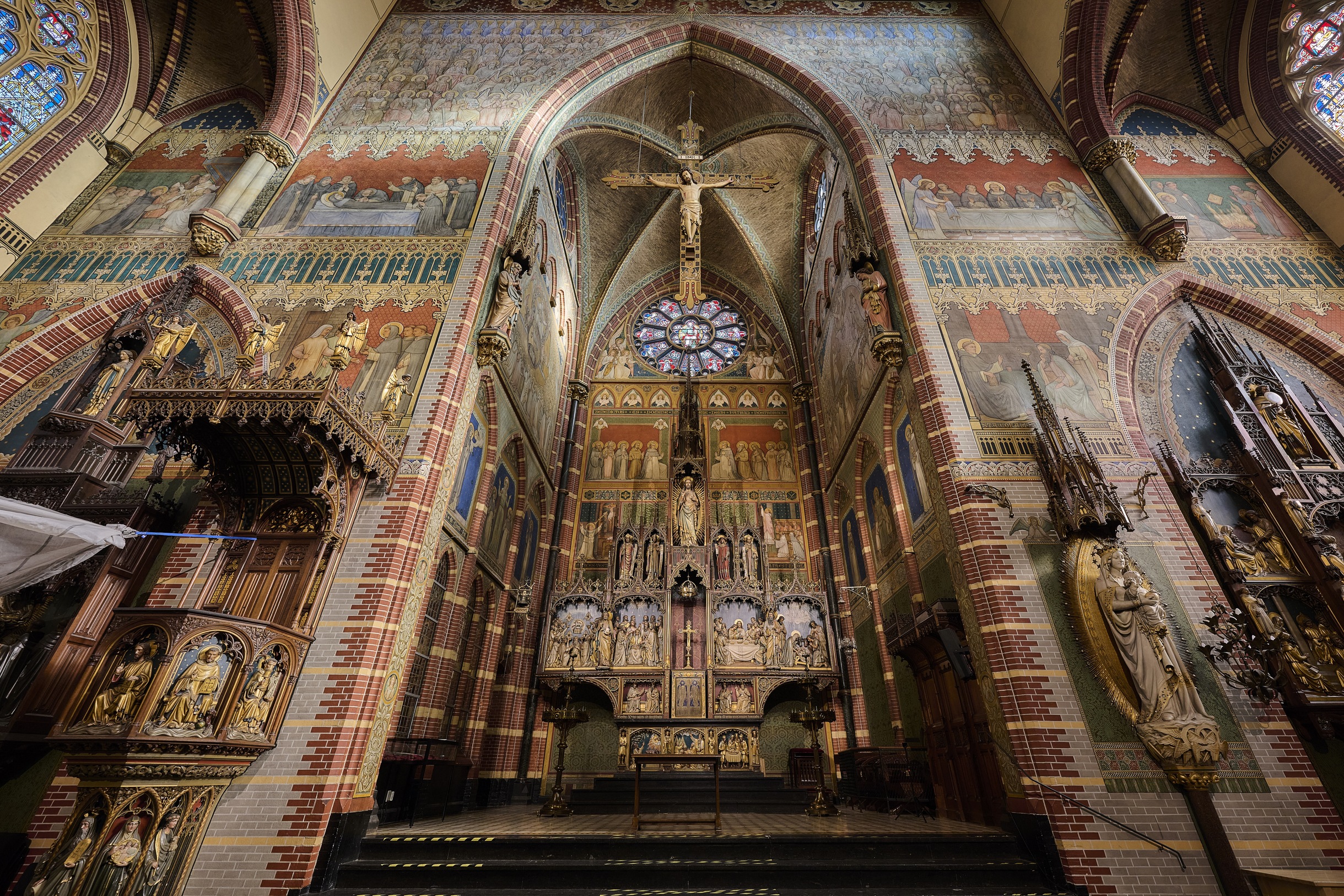The turn of the Church of St. Dominic: a former Catholic, now independent and liberal church.
Location
Dominicuskerk
Spuistraat 12
Type
Church
Religious community
Ecumenical community
Object
Former altar rail used for a new stage
Maker and date
Pierre Cuypers
1893
Visit
In church
In the late 1960s, a renewal process began in the Catholic Church. Dominicans were at the forefront of it. Women and men, gays and straights and even retired priests join in on an equal footing. Pastor Wim Tepe in the 1970s has the courage to express this in the interior. A large part of the wooden altar rail is removed, and made place for a stage in the middle of the church. Since then, the Word of God is proclaimed on one side, the music on the other, and people sit around this configuration. This expresses what this church wants to be.
In 1989, the Dominicus became an independent church. To this day, the liturgical celebrations are heavily attended, including via the live stream, by hundreds of people from far and wide. They are provided by a team of liturgists and musicians. With love for the Christian tradition and the courage to give it a contemporary form.
Liturgy
Refers generally to the prescribed rites of formal and public worship, typically including words, music, symbolic aids, and ritual actions.
Altar rail
The railing which guards the sanctuary and separates the altar from the body of the church. It is also called the communion rail as the faithful kneel at it when receiving Holy Communion.
On this site at the beginning of Spuistraat, there has long stood a hidden church, the Stadhuys van Hoorn, served by the Dominican order. When Catholics were allowed to build churches again in the mid-nineteenth century, the famous architect Pierre Cuypers, also known for the Central Station and the Rijksmuseum, was commissioned to build a church dedicated to Saint Dominic with a small city monastery against it. The church was completed in 1893: a neo-Gothic gesamtkunstwerk with a strikingly straight ceiling supported by steel beams.
hidden church
Building in which hidden religious services were held in the Dutch Republic (1588-1795). Christian denominations outside the Calvinist church, such as Catholics, Lutherans, Mennonites and Remonstrants, had to practice their religions in hidden churches.
Neo-Gothic style
The neo-gothic style is an architectural style that flourished between c. 1830-1910, reviving medieval Gothic architecture.
Arjan Broers
pastor, member of the pastoral work group and liturgical team
Last edited
June 25, 2025
Former communion bench as a conversion of the music stage, Pierre Cuypers, 1893, wood. Collection of Dominicus comminity Amsterdam. Photo Robert Westera.
Exterior and interior: photo Robert Westera.
Conversion of music stage, Wim Tepe, 1973, wood. Collection of Dominicus community Amsterdam. Photo Robert Westera.
't Stadhuis van Hoorn, maker unknown, c. 1624, gable stone. Collection of Dominicus community Amsterdam. Photo Robert Westera.
Hoogewoud, G., 'Sint Dominicuskerk. R.K. Kerk van de H. Dominicus' in: G. Hoogewoud, e.a., P. J. H. Cuypers en Amsterdam : gebouwen en ontwerpen 1860-1898 (’s-Gravenhage 1985) 65-72.
Online sources
https://dominicusamsterdam.nl/
Last visited 06-06-2025










